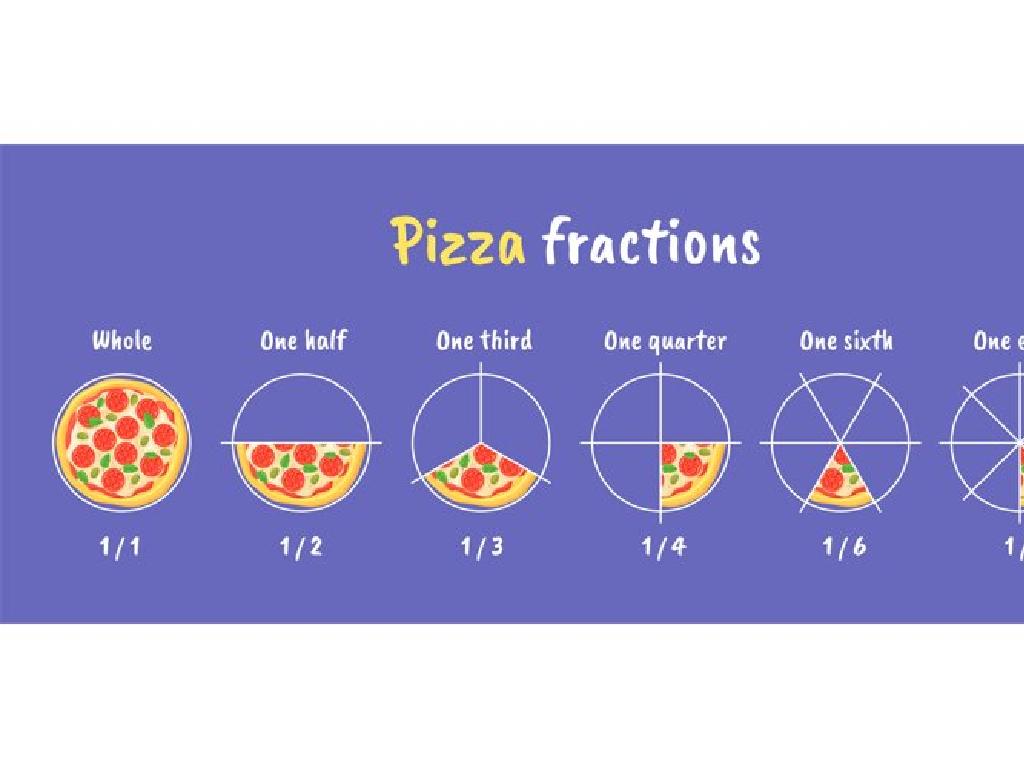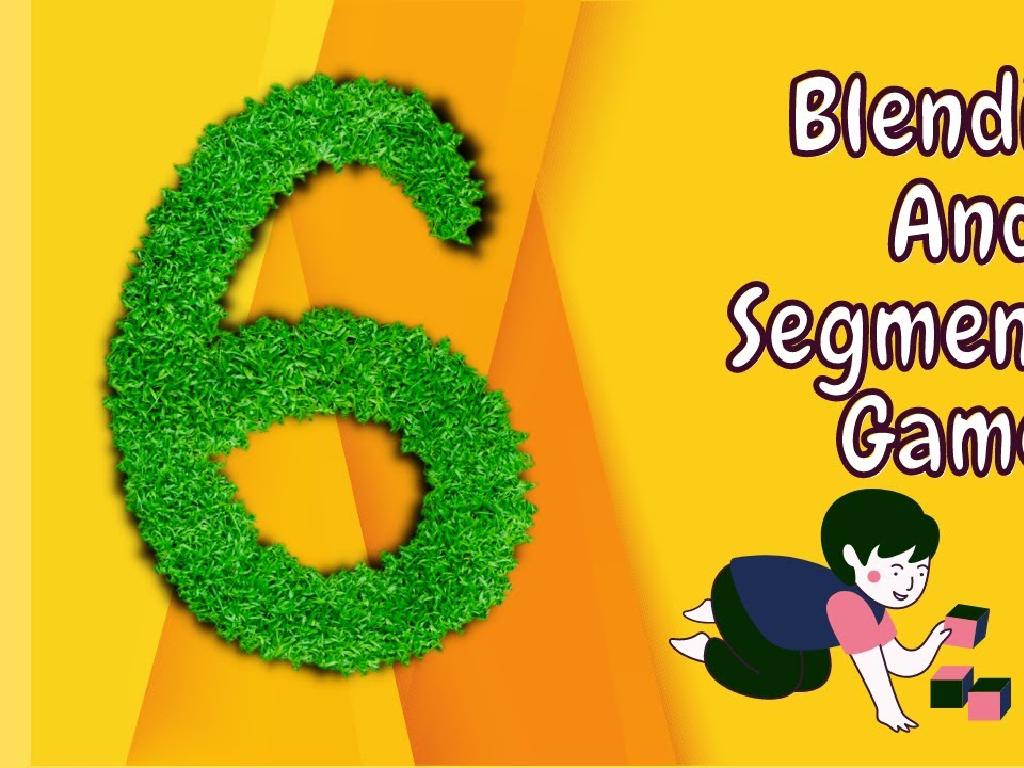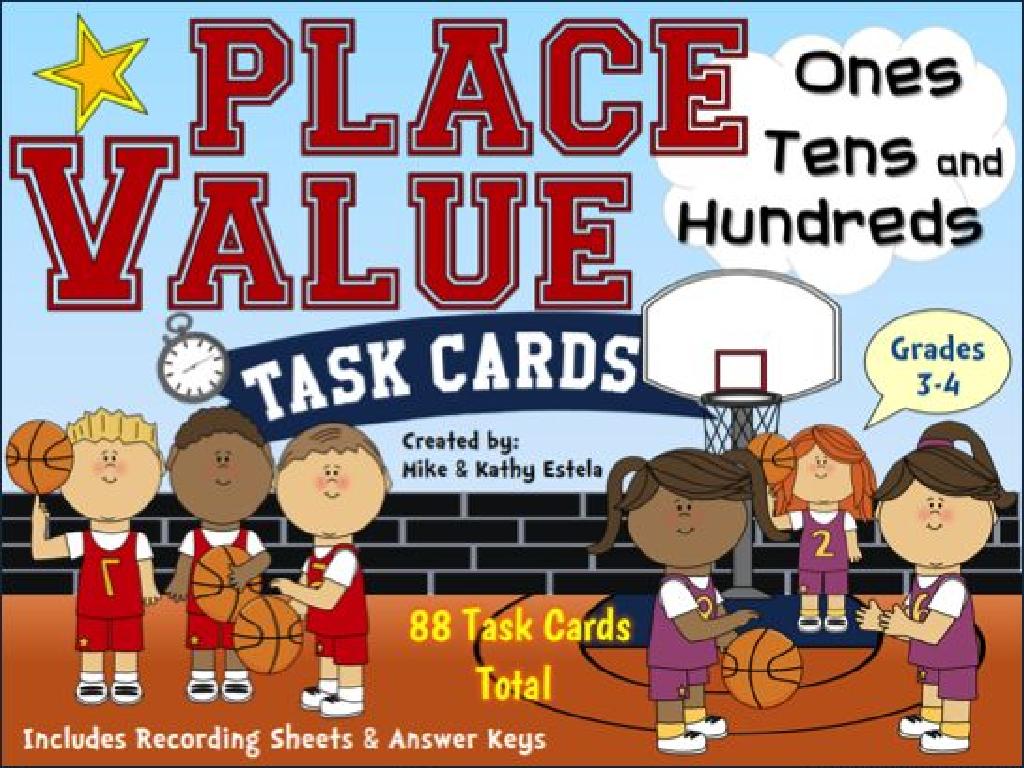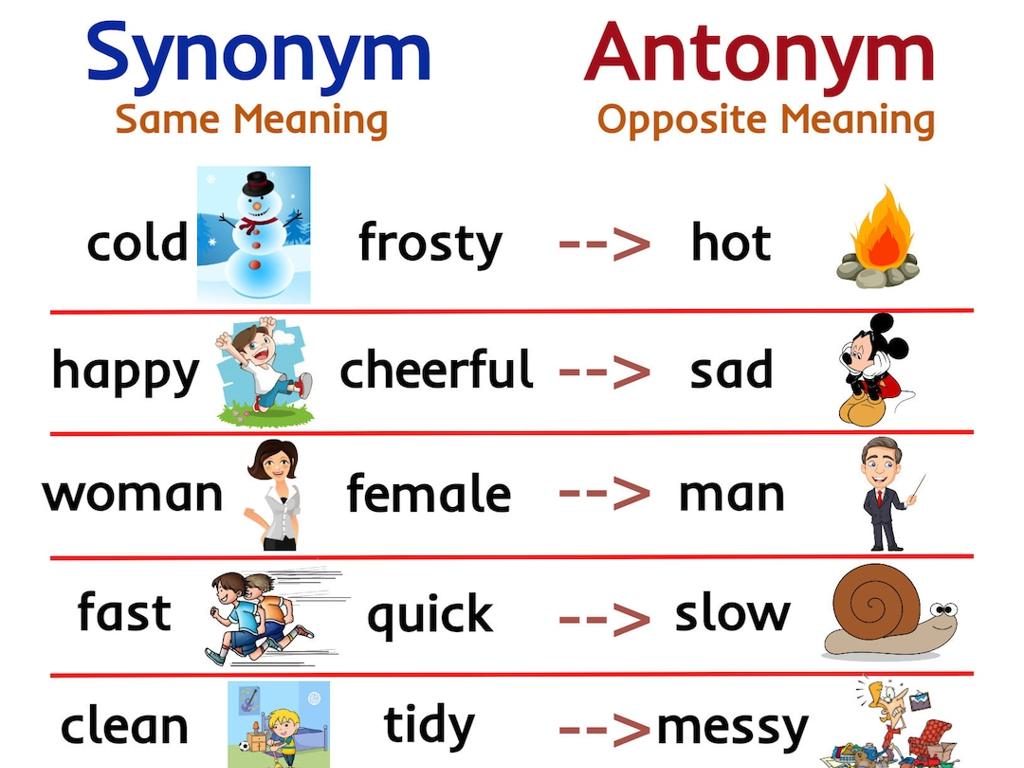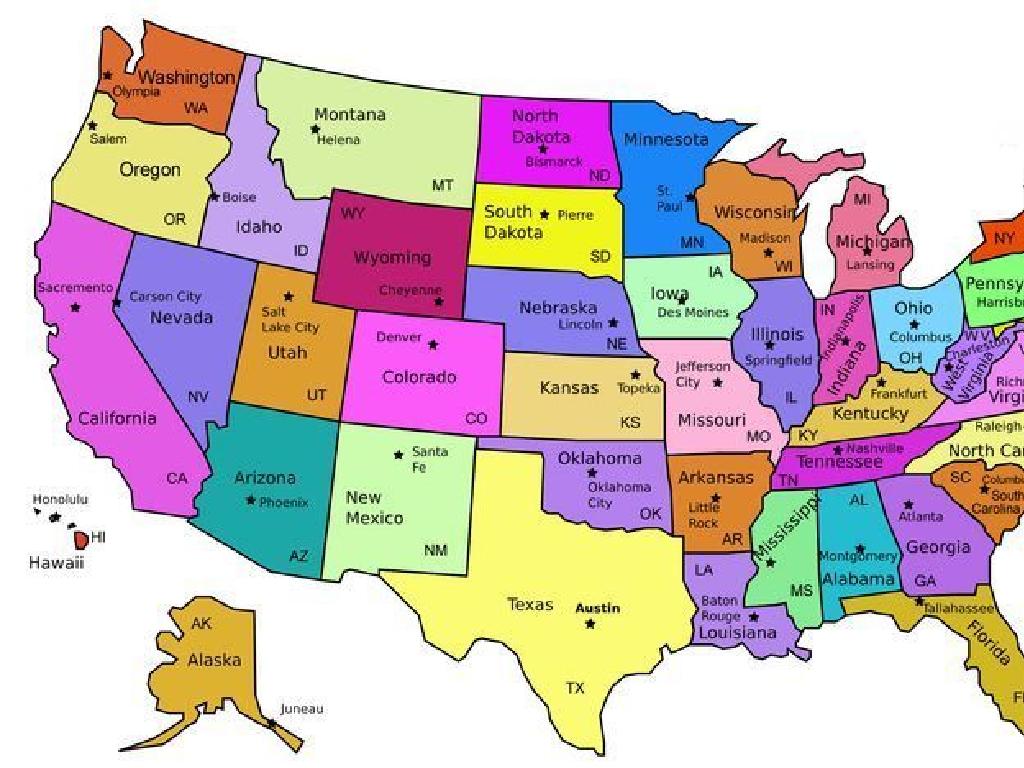Complete The Rhyme
Subject: Language arts
Grade: Kindergarten
Topic: Rhyming
Please LOG IN to download the presentation. Access is available to registered users only.
View More Content
Welcome to Rhyming World!
– Greet our Super Rhymers
– Play with matching sounds
– Words like ‘cat’ and ‘hat’ sound alike
– Rhymes have same ending sounds
– ‘Dog’ and ‘log’ end with the same sound
– Let’s find rhyming words together
– We’ll discover words that rhyme with ‘bee’
|
This slide introduces the concept of rhyming to Kindergarten students in a fun and engaging way. Start by greeting the children enthusiastically to capture their attention. Explain that rhyming words are like word twins because they sound the same at the end. Use simple and familiar examples to illustrate the concept. Encourage the children to listen carefully to the ending sounds of words and to participate in finding pairs of words that rhyme. This activity will help develop their phonemic awareness and enjoy the rhythm and patterns in language. Make sure to praise their efforts and correct gently, fostering a positive learning environment.
What is a Rhyme?
– Rhymes are matching sounds
– Words like ‘cat’ and ‘hat’
– Words that sound alike at the end
– They end the same way: -at!
– ‘bat’ and ‘mat’ also rhyme with ‘cat’
– Can you find rhyming words?
– Try to think of words that sound like ‘cat’
|
This slide introduces the concept of rhyming to Kindergarten students. Rhymes are words that have the same ending sound. Start by explaining that rhyming words are like word families; they sound similar because they have the same ending. Use simple, familiar words to illustrate this point. Encourage the children to listen to the sounds and think of other words that rhyme with ‘cat’. Make it interactive by asking them to come up with their own rhyming words. This activity helps with phonemic awareness, an important skill in learning to read.
Rhyme Time: Listen and Repeat
– I’ll say a rhyme for you
– Listen carefully to me
– ‘The cat in the hat sat on a mat’
– This is our fun rhyme to repeat
– Now you try saying it!
– Can you repeat the rhyme just like I did?
|
This slide is designed for a fun and interactive rhyming activity. Start by clearly saying the rhyme ‘The cat in the hat sat on a mat’ to the class, and then encourage the students to listen closely. After you’ve said the rhyme, invite the children to repeat it after you. This exercise helps with auditory memory, pronunciation, and understanding of rhyming patterns. Make sure to speak slowly and articulate each word clearly. Offer praise and gentle corrections as needed. If time allows, you can ask the students to come up with another word that rhymes with ‘mat’ to extend the activity and foster creativity.
Matching Rhymes: Find the Pairs
– Words that sound alike are rhymes
– I’ll show pictures, you find matches
– ‘Cat’ rhymes with…? (Let’s find out!)
– Think of words like ‘hat’, ‘bat’, ‘rat’
– Listening and matching game
|
This slide is designed to engage Kindergarten students in a fun and interactive rhyming activity. Start by explaining that rhyming words have the same ending sounds. Show pictures to the class and encourage them to find the matching rhyming words. For example, when you show a picture of a cat, prompt the students to think of words that sound similar, like ‘hat’, ‘bat’, or ‘rat’. This activity helps students develop phonemic awareness, which is crucial for early reading skills. Make sure to praise their efforts and correct gently, reinforcing the correct rhymes. You can extend the activity by having students come up with their own words to match with the pictures, fostering creativity and participation.
Rhyme Time: Let’s Finish the Rhymes!
– I’ll start a rhyme for us to finish
– Listen to the beginning of the rhyme
– Example: ‘The little dog ran up the…’
– Think of a word that rhymes
– What word sounds like ‘up’?
– Let’s complete the rhymes together
– We’ll practice with more rhymes as a class
|
This slide is designed to engage Kindergarten students in a fun and interactive rhyming activity. Start by explaining that rhymes are words that sound the same at the end. Give an example by starting a rhyme and having the students finish it. Encourage them to listen carefully to the last word you say and think of another word that sounds similar. Use simple, familiar words to ensure that the children can participate successfully. As you go through the activity, provide positive feedback and support. This exercise will help students develop phonemic awareness and enjoy the rhythm of language. Prepare a list of simple rhymes to use, and be ready to guide the students through the activity with enthusiasm.
Create Your Own Rhyme
– Time to be creative with words
– Think of a word you like
– Find a word that rhymes with it
– If your word is ‘cat’, a rhyme could be ‘hat’
– We’ll write our rhymes on the board
|
This slide is designed to engage the students in a creative activity where they can apply their understanding of rhyming words. Encourage the children to think of any word that they like, which could be anything from their favorite animal to a color or object. Once they have their word, help them find another word that sounds similar at the end, which is what makes them rhyme. For example, if a student picks ‘dog’, they could rhyme it with ‘frog’ or ‘log’. After they’ve found their rhyming pair, invite them to come up to the board to write their words, and then you can all read the rhymes together. This activity will help reinforce their phonemic awareness and understanding of rhymes in a fun and interactive way.
Rhyme Time Activity
– Join ‘Rhyme Time’ game
– Listen to the teacher’s word
– Pass the ball around
– Say a rhyming word when you catch it
– If the teacher says ‘cat’, you could say ‘hat’!
|
This interactive activity is designed to help Kindergarten students recognize and produce rhyming words. Start by explaining what a rhyme is: words that have the same ending sound. Demonstrate with a few examples. Then, introduce the ‘Rhyme Time’ game. As you say a word, gently toss a soft ball to a student. When they catch it, they should say a word that rhymes with the one you said. If they’re unsure, encourage classmates to help out. Keep the game moving quickly to maintain engagement. Possible words to use: cat, dog, log, hat, bat, mat. This activity promotes listening skills, phonemic awareness, and cooperative play.
Review and Goodbye, Super Rhymers!
– What we learned about rhymes
– Share a pair of rhyming words
– For example, cat and hat, or bee and tree
– Celebrate our rhyming skills
– Excited to see you next time!
|
This slide is meant to recap what the students have learned about rhymes during the lesson. It’s a chance for them to reflect on their new knowledge and demonstrate their understanding by coming up with rhyming pairs on their own. Celebrate their efforts and progress in becoming ‘Super Rhymers’ and build excitement for the next class. In the next session, encourage them to continue practicing rhyming with different words and in different contexts to further develop their language skills.

